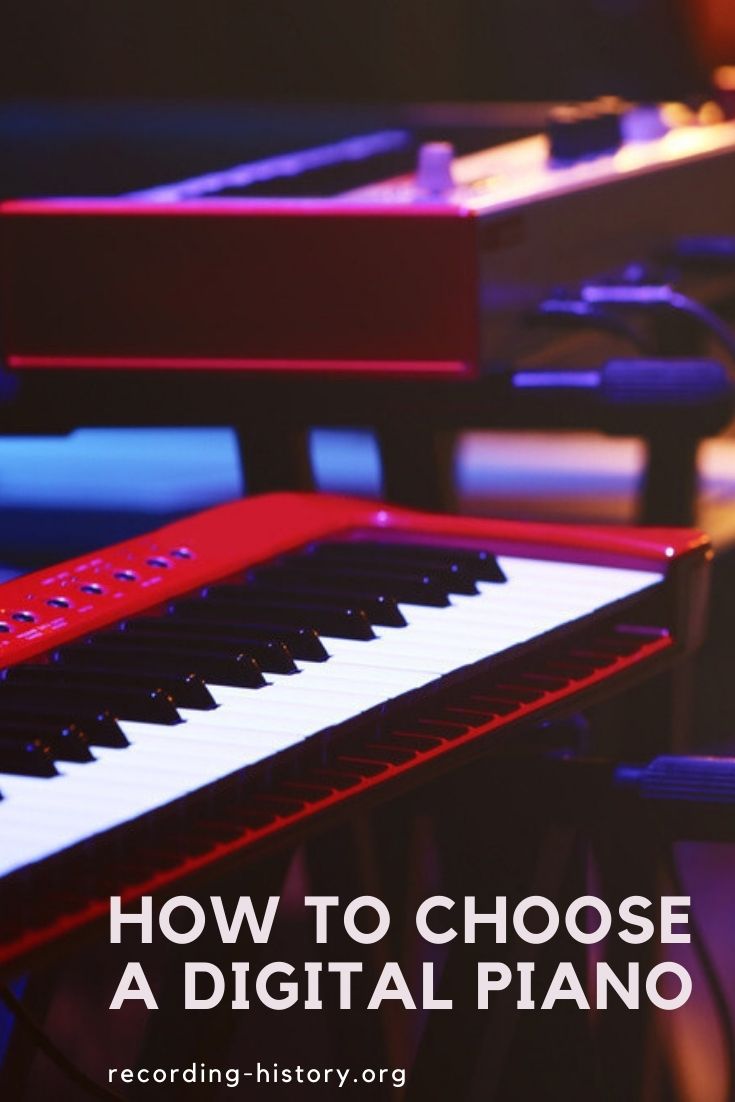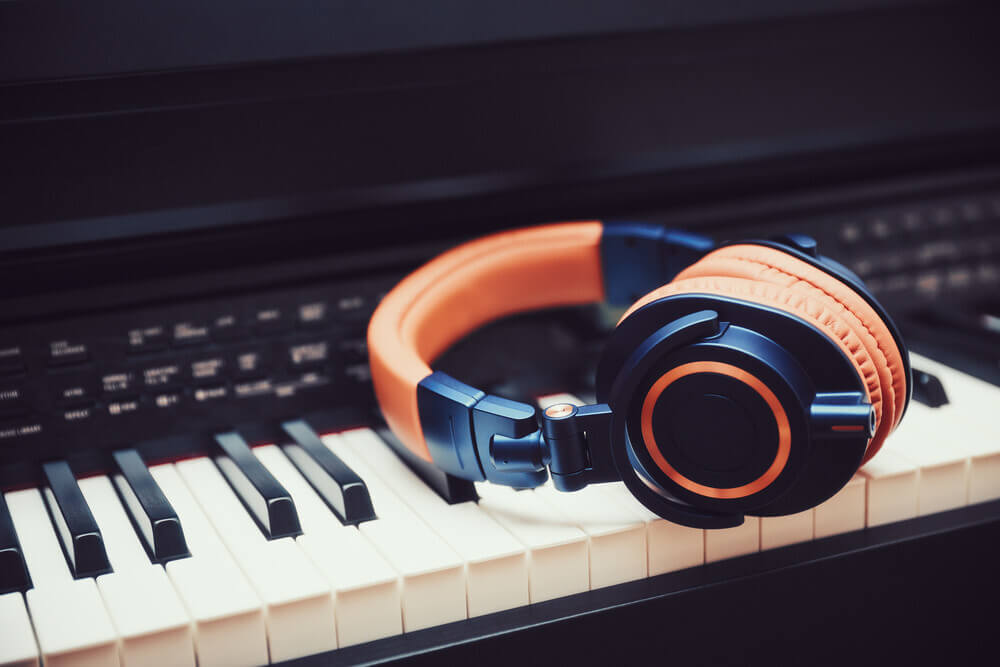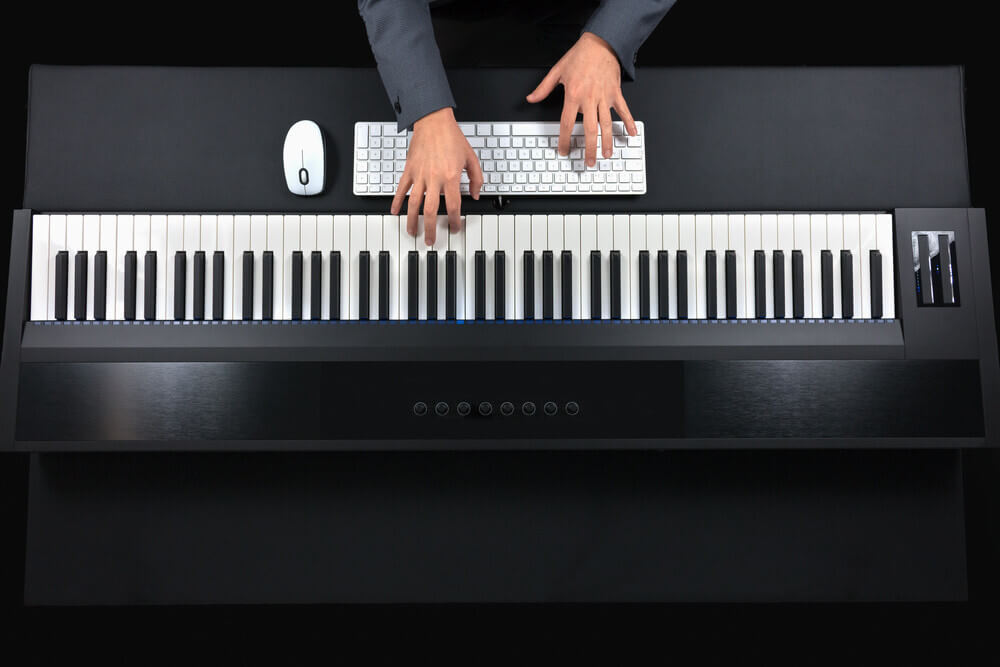How to Choose a Digital Piano
Learning how to play the piano can be a highly rewarding experience. It can be a good instrument for beginners. It’s the ideal way to learn to read sheet music. But, with dozens of options to choose from, it can be hard to know what you should be looking for.
To make the choice easier, here are some of the things you need to consider when buying a digital piano.
Related: 13 Types Of Pianos and Their Uses

Weighting in the Keys
One of the first things that you will need to consider is whether or not the keys will be weighted. Weighting will make the keys feel like those of an acoustic piano. This can make the switch to an acoustic keyboard a lot easier.
There are a few types of weighting. You can get a full weighting. This will most accurately represent the experience of playing an acoustic piano. This is ideal for those who want to play classical music. You might want a semi-weighting or no weighting if you aren’t used to an acoustic.
It might be a good idea to head into a music store. This will let you try out multiple types of weightings for yourself. This will allow you to see which one you prefer.
Related: How many keys on a keyboard piano?
Sound Quality
It’s important to make sure that you choose a piano that offers decent sound quality. This will often depend on the type of inbuilt speakers the piano has. The sound should be as clear as possible. Generally, you will be able to plug a digital piano into a speaker if you are performing.
In-Built Sounds
One of the reasons why people select digital pianos is because of the wide selection of sounds that you can generate. You will be able to simulate stringed instruments like a violin. This can be important for those who want to make their own musical arrangements.
This will also allow you to explore new musical genres. The quality of the in-built sounds can vary dramatically. Though cheaper digital pianos will offer a wider selection of sounds, they tend to be of lower quality.
Headphone Compatibility

Some people prefer to use headphones when they are practicing. This will make it easier for you to focus on the notes. It also ensures that no-one else will hear when you make a bum note. Most modern digital pianos will be compatible with headphones, though you should still double-check before you purchase.
Accessories
When you’re purchasing a piano, you will need to consider whether there are any accessories included. You might be able to find a package that contains things like the sustain pedal. Some might have a built-in stand. While accessories shouldn’t be the only reason you purchase a digital piano, they can be a good bonus.
Polyphony
When you’re choosing a digital piano, it’s important to consider the polyphony. This is the number of notes you will be able to produce at once. You might need to look at the product specifications to find this figure. Generally, you’ll need a minimum of 34-note polyphony.
If you can, aim for a 64-note polyphony. This should let you find a piano that will suit most players. At the more expensive end of the market, you might be able to find a 264-note polyphony.
Size
If space is at a premium in your house, or you want to take the piano on the road with you, it might be a good idea to consider how portable it will be. There are a few factors that will determine how easy it will be to move.
First, you’ll need to consider the weight. There should be plenty of lightweight models for you to choose from. You’ll also need to consider how easy it will be to assemble and disassemble.
Sometimes, you might find a digital piano that comes with a bag. This will ensure that you don’t damage it when you are transporting it.
Features

It’s also important to consider the type of features that you will be able to get from the piano. For example, you might be able to play the piano part in an orchestra. Sometimes you can record your performances.
You might be able to adjust the volume of the backing band. Some digital pianos will let you connect them to the computer and use them as a MIDI. How important these features are will often depend on the way you intend to use the keyboard.
Related: What is the difference between an electronic piano and real piano?
Conclusion
With so many digital pianos out there, it can be hard to know which one is best for you. Hopefully, these tips have made finding the right one easier. If you want more advice, check out these insightful reviews of realistic digital pianos. So, use these tools to find the perfect digital piano for you and start making music today.







